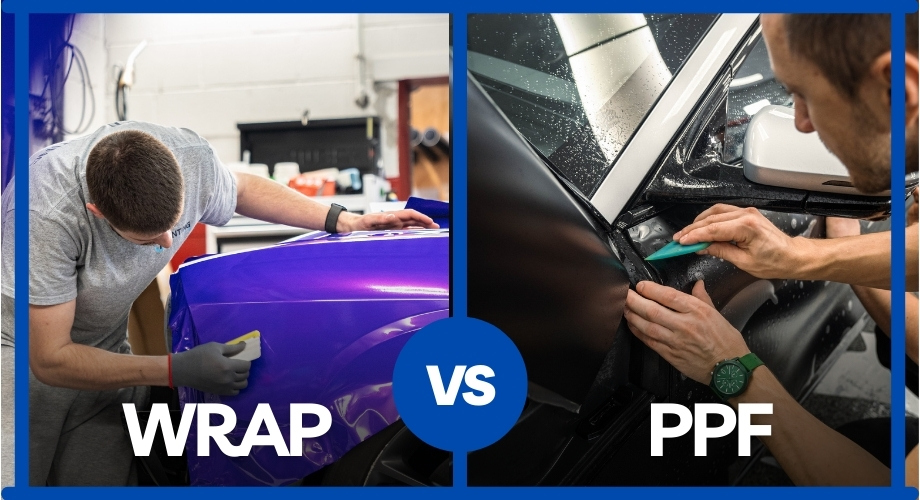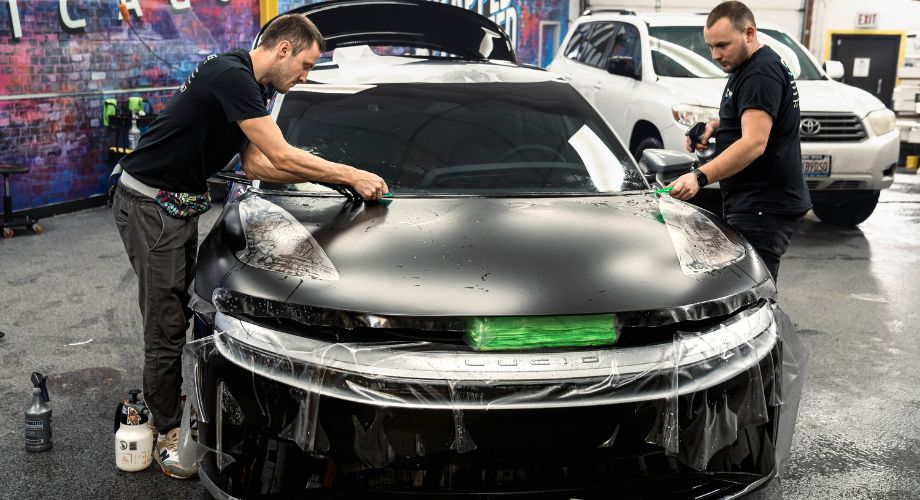



































































































































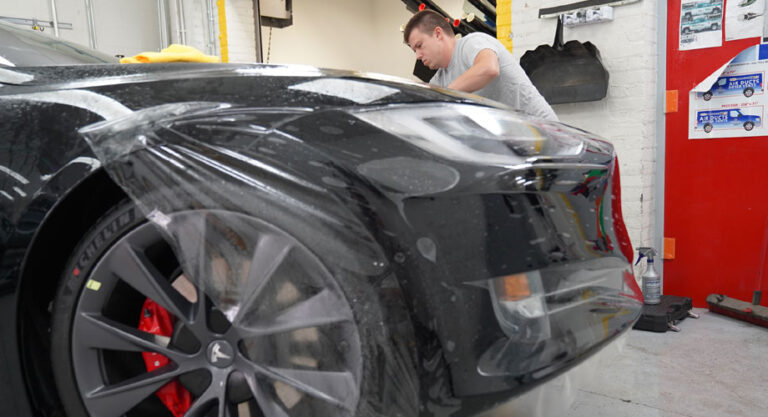
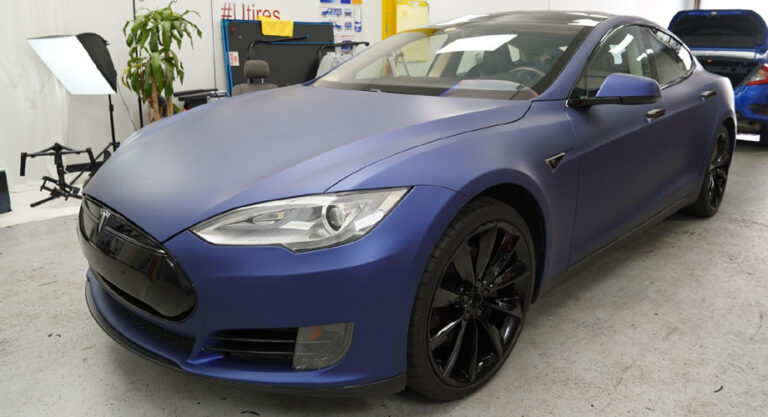




















































































































































A clear bra or PPF is a transparent film is a transparent and resilient coating that is aimed to safeguard a vehicle’s painted surfaces against various forms of harm, including scratches, chips, and other types of damage. It is made from thermoplastic urethane (TPU), a material renowned for its exceptional resistance to impact and abrasion. Besides, PPF repels UV rays, which are especially destructive to paint’s integrity.
Reputable PPF manufacturers implement self-healing technology in their paint protection films. This is a unique ability of PPF to restore its surface after scratches or scuffs – minor imperfections will gradually smooth out and vanish. This type of protection is a must-have for vehicles that traverse areas with abundant road debris. And even if you do not engage your car in much daily driving, PPF will efficiently shield it from UV radiation, acidic substances, stains and other environmental factors. With high-quality paint protection film, your car’s paint will be decently protected for years.

What is the role of vinyl wraps?
Vinyl wrap represents an adhesive-backed film made of polyvinyl chloride (PVC). This coating has a dual purpose – to customize your car’s appearance and protect it from minor damage. Vinyl wraps come in a wide spectrum of colors and finishes, offering matte, glossy and metallic options. Besides, they can incorporate diverse textures to enhance the aesthetics of the car – you can opt for carbon fiber or brushed metal and more.
Vinyl wraps can be used to cover the whole vehicle or just its specific sections. It is a perfect solution when you want to add some identity to your car. It is also a great way to apply an ad or a logo to your vehicle. Vinyl wraps need periodic replacement, typically every few years, and removing them can be more challenging than removing PPF, and incorrect removal can potentially cause damage to the underlying paint.
PPF and Vinyl Wrap discrepancies
With a lot of similar qualities. These two products have key differences, from the material they are made from to service life.
Material. The paint protection film is polyurethane-based. This material gives it exceptional strength and makes it flexible and transparent. Vinyl wraps are composed of PVC, which is much less pliable. However, PVC has a winning feature – it can be dyed to any imaginable color and acquire a range of finishes (gloss, matte or reflective).
Thickness. PPF is significantly thicker compared to vinyl wrap. In the automotive industry, the thickness of film coatings is measured in mils. One mil is one-thousandth of an inch. To better understand this parameter, have a look at your bank card – it measures approximately 30 mil. In the case of PPF, its thickness is generally 8- 12 mil, whereas vinyl wrap is typically only 4 mil in thickness.
Customization. PPF will not change the appearance of your vehicle – it is always clear, just finishes may be matte or glossy. Either than that, the original paint shade of your car will remain unchanged. With vinyl wraps, it is an entirely different story. PVC-based wrapping comes in a lot of colors and textures, fully refurbishing your vehicle’s appearance or accentuating its separate areas.
Protection. Vinyl wraps offer a shield against external elements such as UV rays, insects, and various forms of outside damage. But it concerns only very minor damage. Besides, they do not safeguard your vehicle against moisture or substances like tar and other chemicals. In regions characterized by frequent exposure to snow or rain, it is worth considering PPF, which offers enhanced protection against water, UV radiation, scratches, dents, and other mechanical hazards.
Durability. It is another meaningful difference between colored PPF and vinyl wrap. Paint protection films demonstrate resilience against mechanical damage, chemicals, and even severe weather conditions. Given its robust durability and capacity to endure for extended periods, PPF emerges as the superior choice over vinyl wrap. It will protect the car’s exterior for up to 10 years and even more, while vinyl wraps need to be replaced every few years.
Installation. PPF and wraps are installed differently. The paint protection film is applied using a wet method. The car’s surface is moistened with a soap solution or a special installation gel. Vinyl wraps are applied using a dry method. They are less adjustable when it comes to fitting different panel configurations and demand a higher degree of precision and expertise. On the contrary, PPF can be installed in a day, especially if you entrust this task to experts.
Price. When choosing between PPF vs vinyl wrap cost inevitably holds significant importance. Vinyl wraps offer a lot of customization options and are more cost-effective. PPF comes at a higher price point compared to vinyl wrap, primarily due to its comprehensive protective capabilities. Partial PPF coverage starts at $500 and a full cleat bra can exceed $5,000. Nevertheless, a vehicle equipped with PPF are better protected, and it can preserve its resale value over time.
Maintenance. Maintaining vinyl wrap can be a rather daunting task compared with PPF. It’s essential to clean your vinyl wrap regularly to avoid peeling. In contrast, PPF demands much less maintenance due to its purposeful design, which effectively prevents dirt and dust from the car’s surface. The ability to repel foreign particles ensures that PPF remains securely adhered after application, minimizing the risk of detachment.
Warranty. Vinyl wrap manufacturers generally offer a five-year warranty, whereas PPF warranties can cover up to 10 years. The actual longevity of these wraps is significantly influenced by the initial condition of your vehicle and the skills of installers. If any parts of your car have been repainted, this could potentially diminish the lifespan of both PPF and vinyl wrap. Also, the product may not last as long as you expect if the installation was not executed correctly.
our latest news!
Auto Wrapping Film Types
Matte vinyl wrap
Metallic vinyl wrap
Chrome vinyl wrap
Gloss vinyl wrap
Satin vinyl wrap
PPF or Vinyl Wrap?
To better understand what you get with paint protection films and vinyl wraps, study this comparison chart.
| Product property | PPF | Vinyl wrap |
| Material | Thermoplastic urethane (TPU) | Polyvinyl chloride (PVC) |
| Thickness | 4 mil on average | 8 – 10 mil |
| Appearance | Fully transparent | Can drastically change the appearance of a car – lots of colors and textures are available |
| Level of protection | High protection against mechanic damage and aggressive environment | Light level of protection against minor damage |
| Maintenance | Easy | Moderate |
| Durability | 10 years and more | Up to 7 years |
| Value | Long-term investment | Short-time privilege |
With all the above in mind, do not forget that half of the success depends on how a chosen product is installed. Even purchasing the most expansive paint protection film will not bring the desired outcome if it is not properly applied.
What is the main difference between vinyl wrap and PPF?
It’s the role they play in vehicle protection. The paint protection film is thicker and builds a more reliable shield from road debris, rock chips and environmental hazards. Vinyl wrap only partially safeguards against scratches and minor damage and is more appropriate for customizing a car’s appearance.
Which coating better protects the vehicle’s custom paintwork?
While both options come with built-in protection capabilities, PPF is definitely more efficient in this matter. Paint protection film will shield the car’s outer surface for all potential threats during highway driving and off-road.
Is paint protection film stronger than vinyl wrap?
Yes, TPU has a higher melting point than PVC, making PPF more flexible and less susceptible to cracks and various damage. When you bend these two coatings, the vinyl wrap has more chances to break or distort.
Do PPF and vinyl wrap look the same?
These are absolutely different. PPF is a clear film that does not change the original look of your vehicle. Vinyl wrap can come in a range of colors and patterns that will transform your car’s aesthetics.
Which coating has a longer lifespan?
PPF is more durable and lasts from 7 to 10 years, depending on the quality of the installation, proper maintenance and the quality of the film. At the same time, vinyl wrap’s lifespan is much shorter – it is between 3 and 5 years.
Is it easier to install PPF or vinyl wrap?
The best approach is to ask a professional to install protective coating for your car. PPF requires a car to be wet when it is applied, while vinyl wrap is applied over a completely dry surface.
Which option is more affordable – PPF or vinyl wrap?
There are many factors that determine the final cost – the size of the covered area, the design complexity and the cost of the coating itself. But in general, vinyl wraps are less expensive compared to PPF. However, despite the high cost, PPF is an excellent long-term investment that maintains your car’s appearance and prolongs its resale value.
Final takeaway
We may sum up that it is obvious that only your practical requirements matter when you make a decision between PPF or vinyl wrap. It is clear enough that you should prioritize function over aesthetics. If your ultimate goal is the shiny and glossy appearance of your car, then vinyl wrap may better cope with this task. But if you are concerned about your vehicle’s paint and protect it from scratches and other environmental damage, then it is exclusively PPF. Comparing these two options might seem challenging, so hopefully, this article will help you better understand which solution will better match your specific needs.



























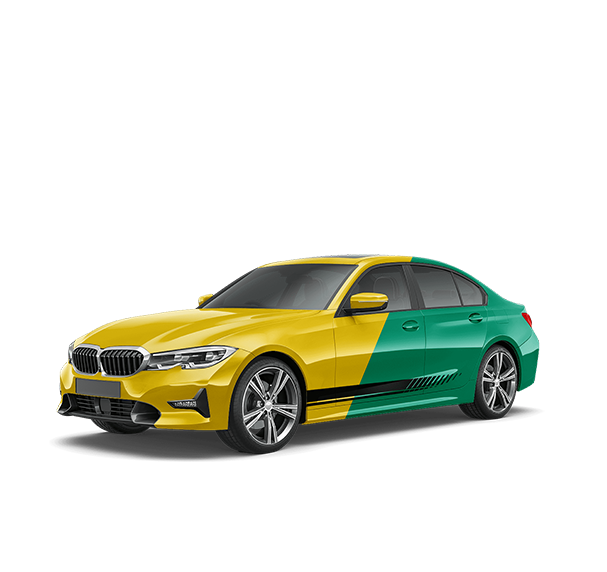
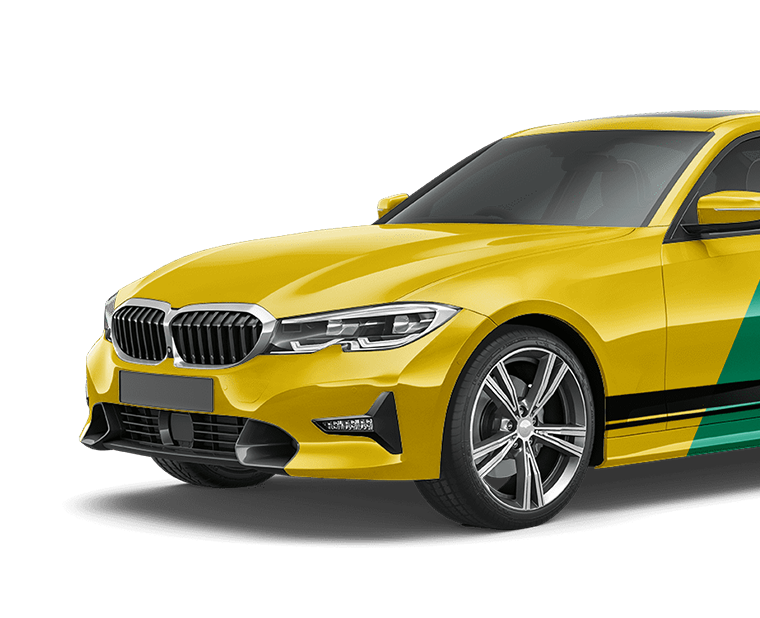


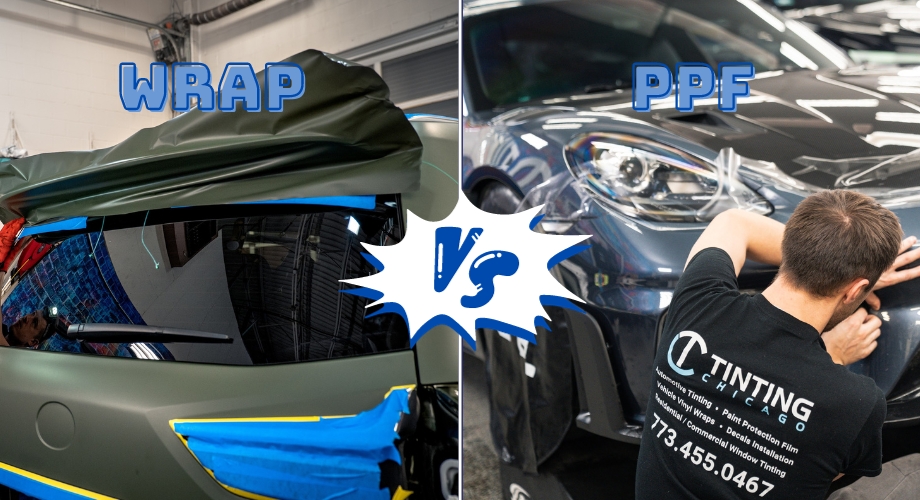
 Send a message
Send a message Send a message
Send a message